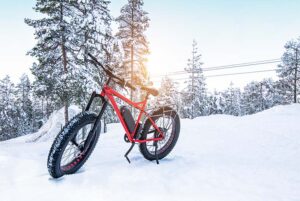SABIC has introduced new LNP CRX copolymer resins at the smarter E Europe 2023 show in Munich, Germany.
 These specialized resins give customers in the mobility and industrial sectors new material options that can resist both harsh chemicals and challenging environmental conditions.
These specialized resins give customers in the mobility and industrial sectors new material options that can resist both harsh chemicals and challenging environmental conditions.
The new specialized polycarbonate (PC) copolymer-based LNP CRX products deliver the chemical resistance expected from this portfolio, in combination with exceptional weather ability (UL74C F1 rating, low-temperature ductility and ability to withstand high levels of heat and humidity).
These properties may help enhance the durability of components such as charging sockets for electric vehicles (EV) and housings for outdoor battery storage equipment.
In turn, greater durability helps to extend the useful life of parts, thereby advancing sustainability goals through lower demand for raw materials, energy, water and other resources. It also helps customers protect their brand reputation and minimize costly recalls and warranty claims.
Because of these durability and sustainability benefits, the new additions to the LNP CRX copolymer resin portfolio can be great options for applications across several market sectors, including healthcare and consumer electronics.
“One important aspect of sustainability is finding new ways to extend the service life of products,” said Joshua Chiaw, Director, Business Management, LNP & NORYL, Specialties, SABIC. “Although durability hasn’t received as much attention as recycling, for example, it could reduce environmental impact across the application lifecycle. SABIC’s sustainability strategy not only focuses on incorporating recycled, upcycled and renewable content in our thermoplastics but also on the development of highly durable materials that help prevent premature disposal and waste. We continue to expand our LNP CRX family with new products and new target applications to help more customers design for durability.”
The signature property of all LNP CRX copolymer resins is high resistance to aggressive chemicals. The first grades in the portfolio offered enhanced chemical resistance for medical devices exposed to repeated cleanings with aggressive disinfectants.
However, this growing family of LNP CRX resins is also resistant to motor oil, gasoline, turpentine, caustic soda and brake fluid used in the mobility sector; industrial chemicals such as brake fluid and tar remover; and lotions, sunscreen, hand sanitizers and skin oils that affect consumer electronics devices.
These amorphous copolymer resins often deliver chemical resistance comparable to that of crystalline materials, such as flame retardant (FR) polycarbonate/polybutylene terephthalate (PC/PBT) blends, and can surpass the performance of other amorphous resins such as FR PC and impact-modified FR polycarbonate/acrylonitrile-butadiene-styrene (PC/AB) blends.
In addition, all LNP CRX grades provide non-brominated/non-chlorinated flame retardancy and good processability for both injection molding and extrusion. They meet both ultraviolet (UV) and water immersion requirements (F1 rating) for outdoor suitability under UL 746C.
SABIC will display several example components made with these materials, including injection molded enclosures, housings and connectors, and extruded profiles and sheet products.
“Our LNP CRX copolymer resin family, which initially was positioned in medical devices requiring resistance to disinfectants, is steadily growing with new grades to serve demanding needs required in other markets,” said Luc Govaerts, Technology Director, Specialties, SABIC. “Our latest additions leverage our proprietary copolymer technology to provide excellent resistance to chemicals and extreme environmental exposures faced by high-performing durable applications such as electric vehicle charging infrastructure, and EV and e-bike batteries. These high-performing more-durable materials help extend service lifetimes for our customers.”
